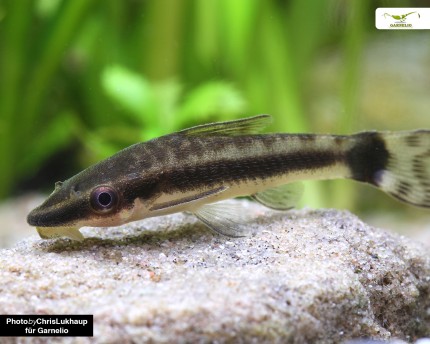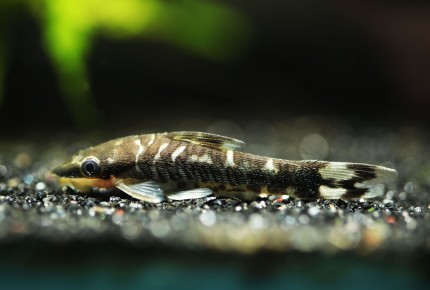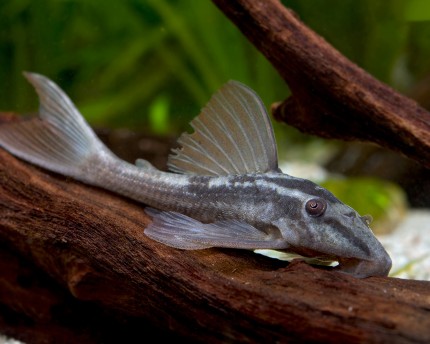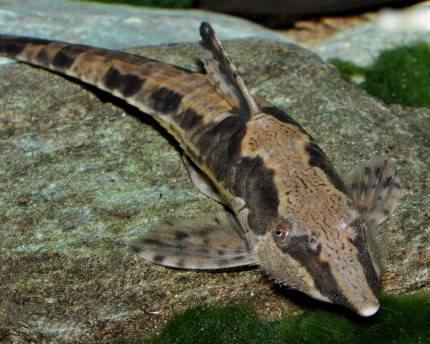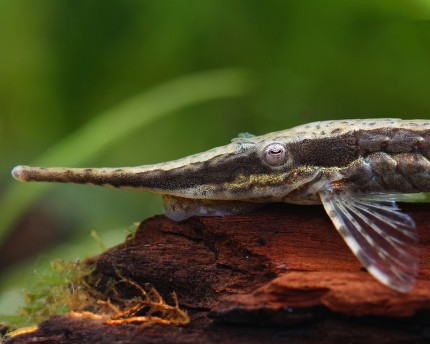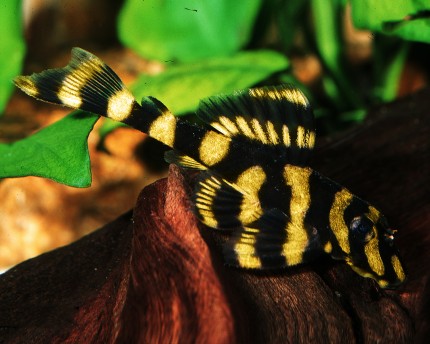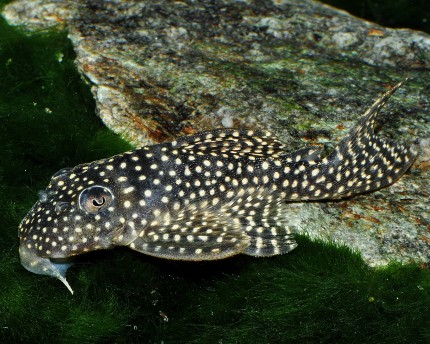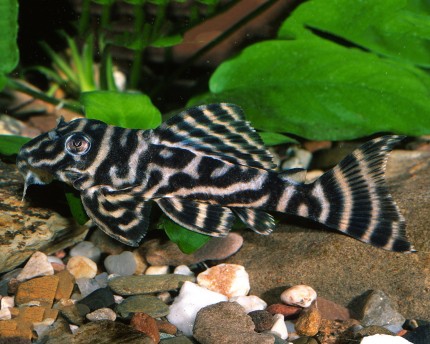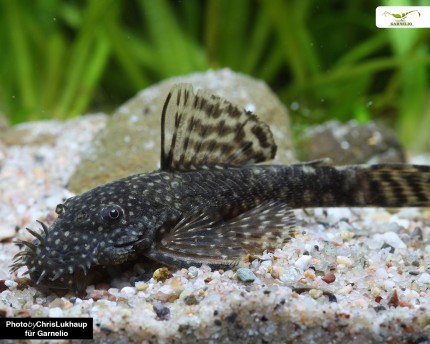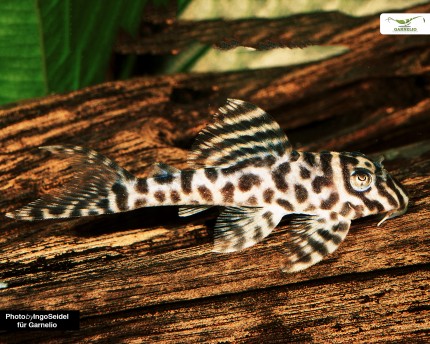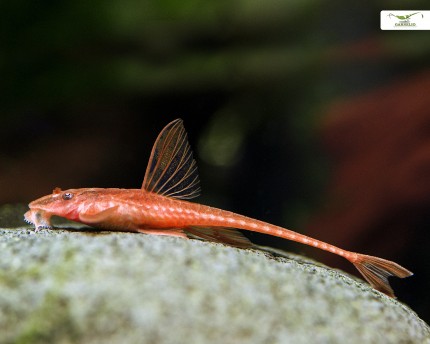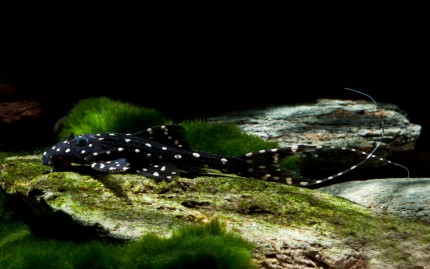L-catfish in nature
The numbering of Loricariidae or loricariid catfishes from South America is quite practical, because in this way even undescribed or undetermined species can be clearly identified and assigned in aquaristics. This system has also become internationally accepted. The loricariids are an unbelievably large fish family, which includes such well-known "common fish" as the L0815, the Ancistrus sp. or Blue Antenna Catfish and its golden albino color form or also the small ear lattice loricariids Otocinclus sp. but also rarities like the L46, the coveted zebra l oricariid or beauties like the L14 or sun loricariid, the L260 Queen Arabesque, or giants like the green panaque L191 or the honeycomb shield catfish L165 for the very large aquariums over 1000 liters. Loricariids are available from mini to giant, they are spotted, with wormline pattern, striped or even differently colored. They have the perfect camouflage in their habitats in nature - their patterns and colors make them visually disappear at the bottom of the water. In addition, most catfish are nocturnal or crepuscular. Lesser catfish are popular as aquarium fish - species like the Antenna catfish are incredibly hardy and very easy to keep, but other L catfish can be quite demanding to keep and especially to breed. Loricariid catfish do not have scales, but rather bony plates that protect their bodies. The typical sucking mouth of the catfish is surrounded by barbels.
The swim bladder of the loricariid catfish is atrophied, which can be seen very well in their swimming style. The different species among the L-catfishes in aquaristics live in quite different habitats. Basically, however, it can be said that in the aquarium water of loricariid catfish humic substances are never wrong, because they are usually also found in their freshwater biotopes even in large quantities and because the ornamental fish are accustomed to them.
Behavior of L-catfish in the aquarium
Many loricariid catfish are primarily crepuscular or nocturnal. Male loricariid catfish are sometimes quite territorial and will fight at times. In a sufficiently large and well and sensibly with roots, stones, caves and possibly with plants furnished aquarium the rivals can go however well out of the way. Single keeping is often practiced with loricariid catfish, but it is not really species-appropriate.
Many species of loricariids are well suited for socialization with other aquarium fish. Especially the smaller species like ear lattice loricariid Otocinclus sp. are a perfect match for dwarf shrimp. Some L catfish are known to nibble on plants such as Echinodorus. This can be somewhat prevented by feeding them vegetables, but unfortunately, once they get a taste for it, they will not completely stop grating on Echinodorus leaves.
L-catfish in the aquarium
Among the Loricariidae there are very large growing representatives like the Honeycomb Shield Catfish or the Green Panaque, which really grow very large. They do not adapt to the size of the aquarium, but need a sufficiently large tank. The water values for L catfish in the aquarium are different. While there are species like the L0815, Ancistrus sp. and its golden albino color form that can tolerate any aquarium water from soft to hard, there are other catfish that would like soft to medium hard water at most in the aquarium, for example, especially for breeding. Humic substances in the water of the aquarium are not wrong in catfish keeping. Many species of loricariid catfish need wood as a source of fiber for healthy digestion, so real wooden roots are mandatory here. Catfish burrows of suitable size serve a good structure and offer hiding places - please always offer one more than you keep catfish in the aquarium.
Breeding L-catfish in the aquarium
Breeding L-catfish in the aquarium is easy to very difficult, depending on the species. The Antenna Catfish, for example, reproduces almost unstoppably and should be kept in single-sex groups. Rarer loricariids like the L46 Zebra loricariid on the other hand are rather difficult to breed. They are accordingly sought after in the aquarium hobby.
Socialization of loricariid catfishes
Many L-catfish for aquariums are well suited for the community aquarium, because they live at the bottom and eat mainly growth. Smaller L-catfish go well with dwarf shrimp, the larger species are sometimes a bit too robust for the delicate shrimp. Socialization with crayfish can go well, but depends strongly on the character of the crayfish. Basically problematic is that the same hiding places are claimed and that crayfish and L catfish also populate the same regions in the aquarium.
Feeding loricariids correctly
Among L-catfish, there are algae eaters and growth eaters, which you can feed perfectly with NatureHolic Catfish Rods and Algae Plates. Most species, on the other hand, are omnivores. Feeding them with frozen food suits them very well. Excessive herbivory can be distracted somewhat from the green stuff in the aquarium with soft or over-broiled vegetables.
Conclusion
It is almost impossible without catfish - they clean away algae deposits and provide a clear view into the aquarium, because they eat algae from the panes. Apart from that they are beautiful and for the most part also quite easy to maintain aquarium fish, which depending on the species also fit perfectly into an appropriately set up community aquarium. You can buy the attractive algae eaters and scrappers here in Garnelio's online store - both the classics and the rarities.

